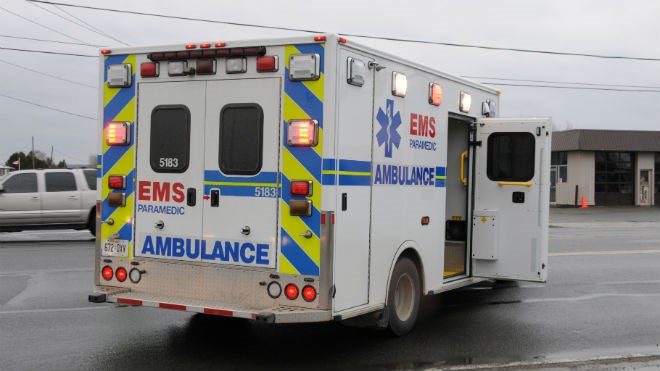The reason, said Aaron Archibald, Greater Sudbury's Deputy Chief of EMS operations, is an aging population increasingly in need of care.
“That's the driver of the increase,” Archibald said. “Greater Sudbury is not growing in population size, but we are aging. And that's not just affecting us – that's impacting all facets of health care.”
And Tim Beadman, the city's chief of Fire and Paramedic Services, said patients from outside of Sudbury are also putting a strain on the system.
“Our draw from the hospital sector is huge,” Beadman said. “We get calls from all over northeastern Ontario. Last year, we had 2,500 calls for service from the Sudbury Airport … We won't be able to keep up.”
Emergency responders are also struggling to reach heart attack patients within six minutes, Archibald said, the target time to give patients the best chance at recovery.
The city set a target of reaching those patients within six minutes 70 per cent of the time, but was only able to reach 67 per cent. And the paramedics also fell short of the target of reaching the next most serious patients within eight minutes.
The reason, he said, was geography. Some people live too far from the 10 paramedic stations in Greater Sudbury.
“As you move farther and farther away from the downtown core, and as distances and time increase, it does impact our response (time),” Archibald said. “However, they accounted for less than one per cent of all of our calls.”
In total, about 70 per cent of all calls come from downtown Sudbury, and the target times there were easily reached.
“But last year we had areas where, because of their location, our response was prolonged,” he said. “The Dowling area, Azilda, the eastern side of Hanmer, the eastern corridor of Highway 17, into Coniston and Wahnapitae, and Lively, as well.
“Because of the location of the paramedic stations, paramedics can only drive to 66 per cent of households within that six-minute drive time. This means we will always have challenges in responding to outlying areas.”
The geographic challenge, and especially the increase in the number of calls, means they will need to increase staffing at some point, Archibald added.
“As call volumes continue to rise, we are approaching our capacity for service delivery,” he said. “In the future … we'll have to come back to council for service level increases.”
